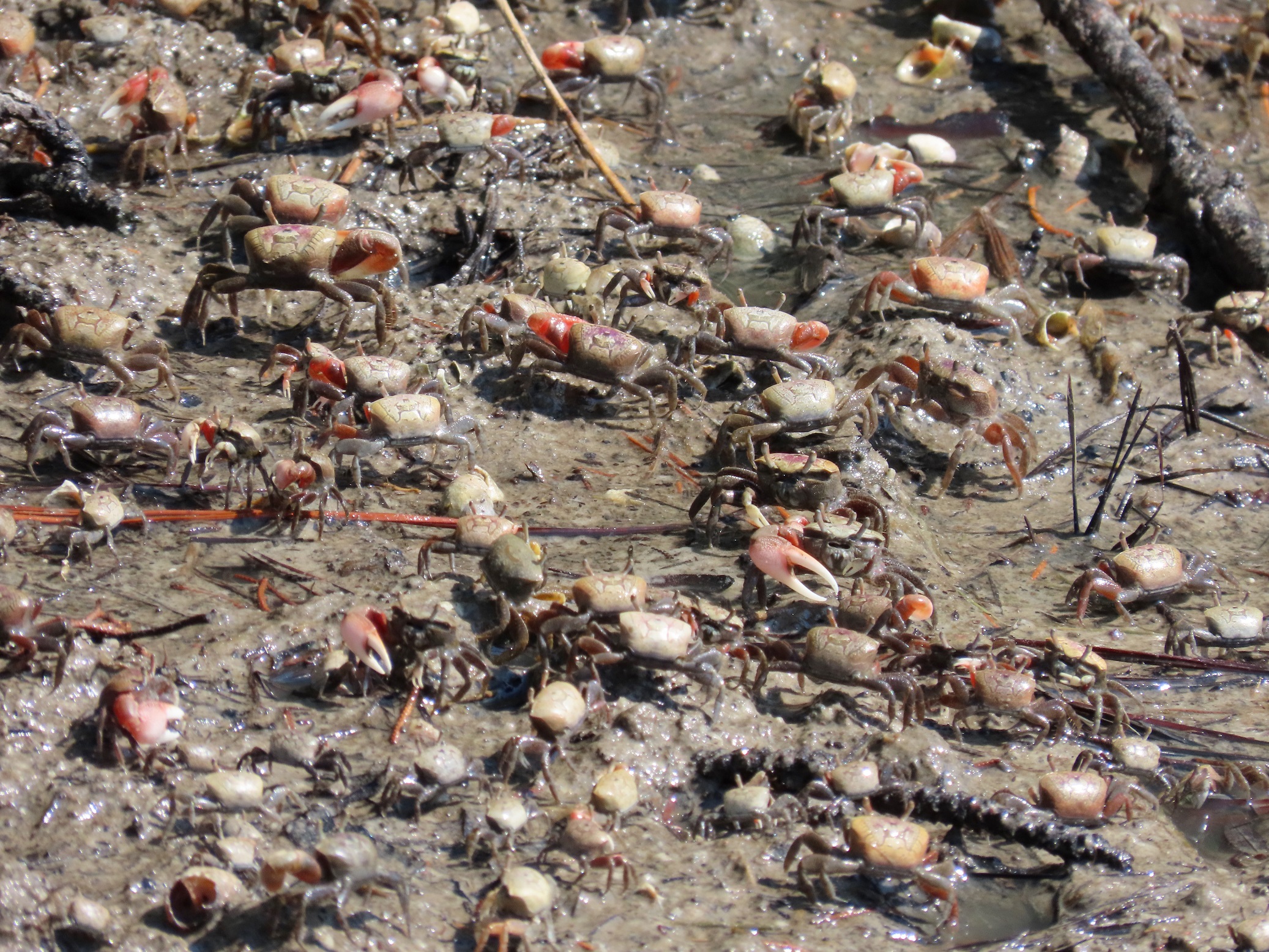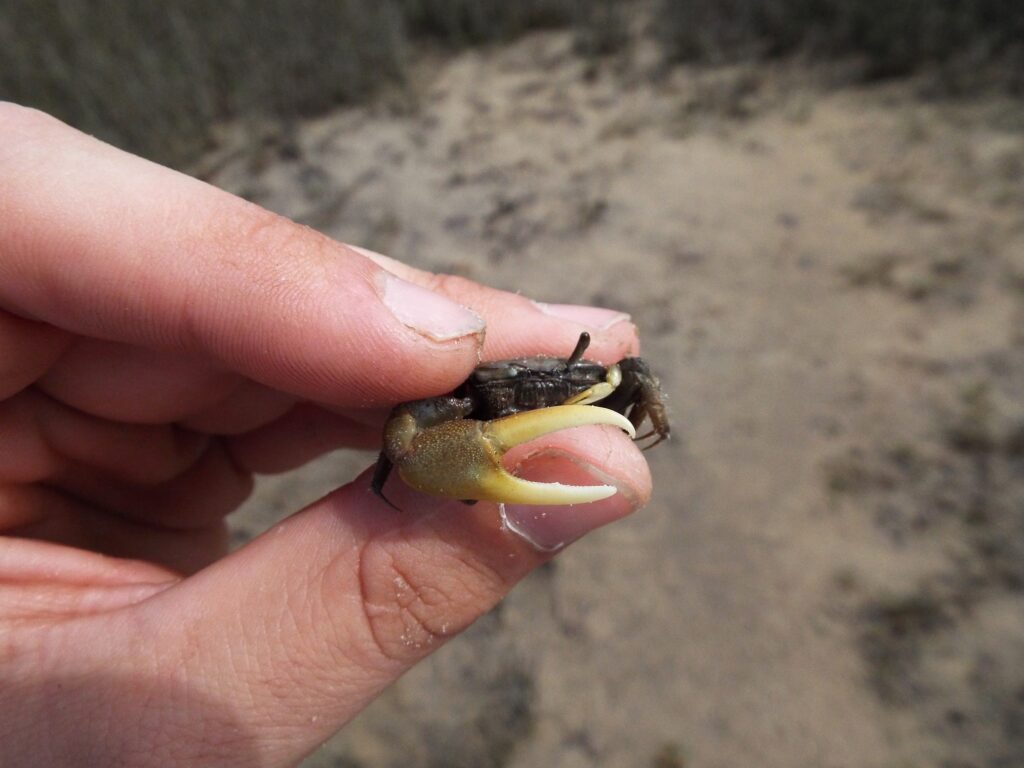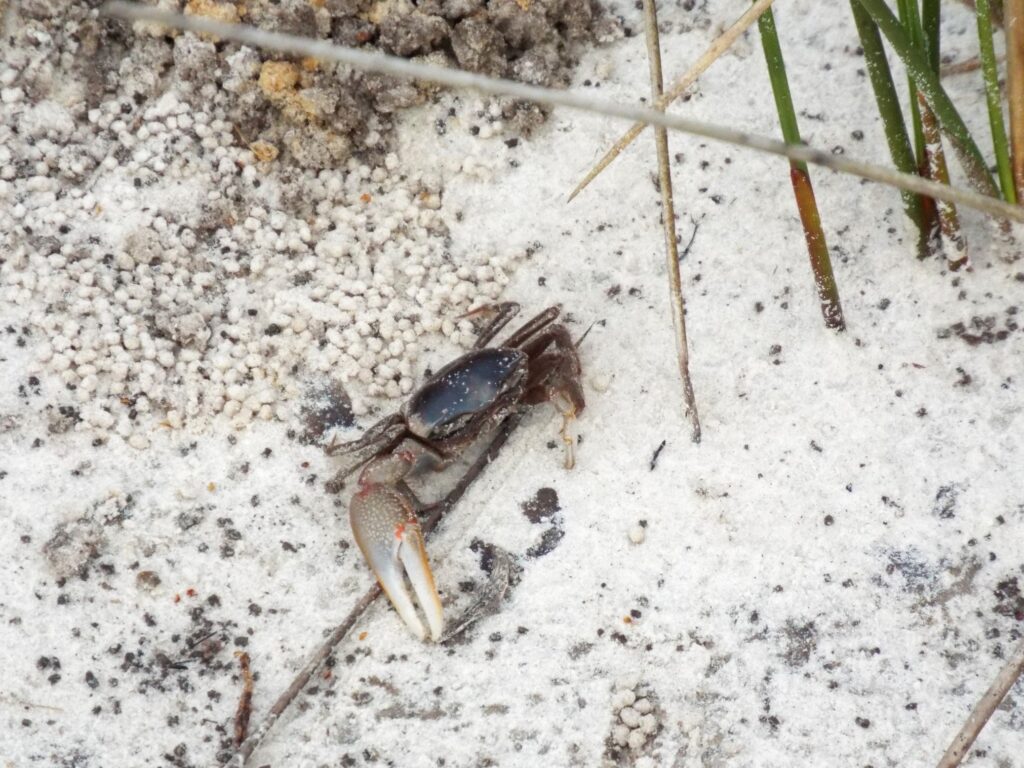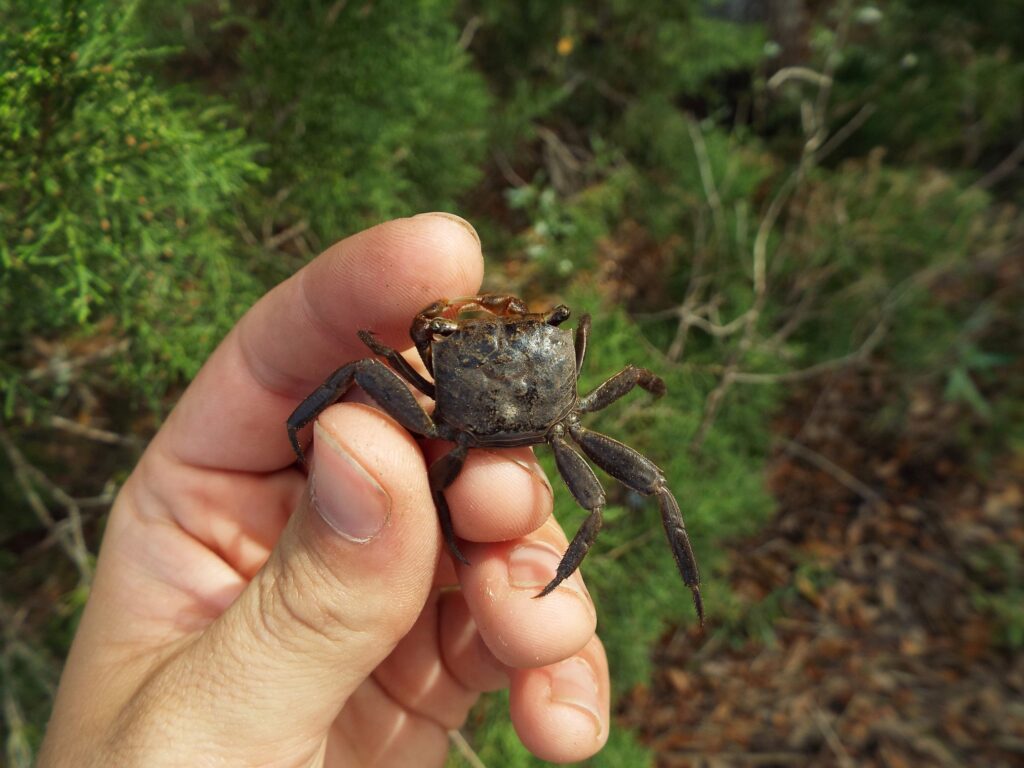




This week for Flora and Fauna Friday we have a trio of catawampus crustaceans and their four-cornered cousin: the Fiddler Crabs (Genera Minuca and Leptuca) and the Squareback Marsh Crab (Armases cinereum).
Here on Edisto we have three species of Fiddler Crab: the Red-jointed Fiddler Crab (Minuca minax), the Atlantic Marsh Fiddler Crab (Minuca pugnax), and the Atlantic Sand Fiddler Crab (Leptuca pugilator). We also have the Squareback Marsh Crab, a similarly sized common crab belonging to a different family and with a very different life-style. All four of these crabs are about two inches in width with an overall drab brown or grayish-brown appearance. Our three Fiddler Crabs have a deep, rounded but boxy body and eyes on pedestals that stick up well above it. Fiddler Crabs are distinctly sexually dimorphic, meaning males and females are clearly distinguishable. Male fiddler crabs have one massively oversized claw that they use for courtship and fighting amongst themselves. This claw is roughly half the size of their abdomen and they can often be seen waving it around to woo the ladies and scare off the other lads.
Male and female Squareback Marsh Crabs on the other hand look pretty much the same. They have a broad, flat, square body, wideset eyes on short stalks, and small even-sized claws. They all come in a uniform shade of pluffmud gray-brown. They spend their lives in the marsh fringes and can often be found running through lawns and clinging to garage walls, like a cockroach, at homes built near the high-water line.
Our three Fiddler Crabs can be a bit tricky to tell apart at a glance but they have a few key features and lifestyle differences we can identify them with. The Atlantic Sand Fiddler Crab is likely the one you’re most often to notice. They make their burrows in sand and are a common sight on salt flats in the high marsh. In summer, they can often be seen moving in huge herds through these salt flats. They have a fairly colorful appearance of an ash-gray back with a Rorschach-esque pattern embedded in it and occasionally a splash of royal-purple between the shoulders. The middle segments of their limbs are often a deep pink-orange too. The Atlantic Marsh Fiddler Crab, as the name suggests, prefers to live in mud. You’ll find them in the low-marsh making burrows in the pluffmud. They have a more reserved appearance, with a predictable gray-brown body to match their pluffmud abode and claws a bone-white or faded-yellow. The Red-jointed Fiddler Crab has, you guessed it, red joints. There are crimson patches on practically all of its joints as well as the edge of the carapace. Its appearance and lifestyle are somewhere in between the other two. Its back ranges from mud-gray to sand-white and its claw can be tan to reddish-brown. They’re notable for preferring lower salinities and are more common farther inland as well as in brackish systems.